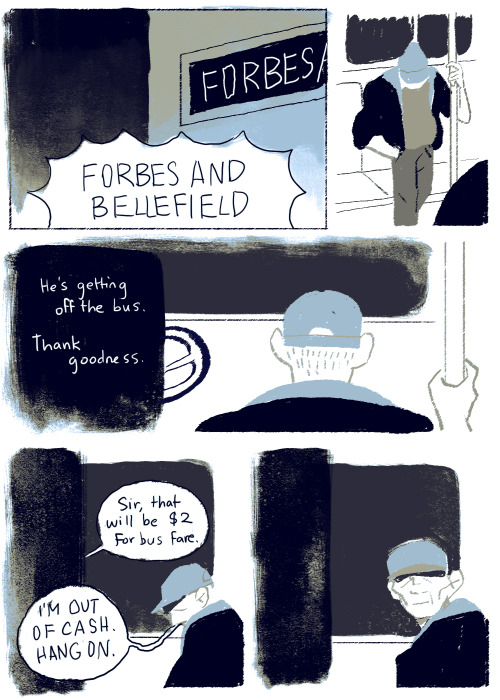Ad Astra, John Glenn (1921-2016)
Ad Astra, John Glenn (1921-2016)
An astronaut.
A pilot.
A husband.
A father.
A United States Senator.
An American hero.
An original.

John Glenn (1921-2016) was all those things and more. When he rocketed into space on Feb. 20, 1962, to become the first American to orbit Earth, the flight set the nation on course to meet ever-more ambitious goals.
The life and career of Senator Glenn eclipses those of many. In spite of his accomplishments, he was a humble and gracious man (and 4-term U.S. senator).
During Glenn’s first flight, a scheduled 30-minute test to determine whether Glenn could fly the capsule manually became a matter of life and death when the automatic system malfunctioned after the first orbit.

“I went to manual control and continued in that mode during the second and third orbits, and during re-entry,” Glenn recalled later. “The malfunction just forced me to prove very rapidly what had been planned over a longer period of time.” Another problem seemed even more serious – telemetry indicated the spacecraft’s heat shield was loose. It seemed possible that Glenn and the spacecraft would be incinerated on re-entry. Glenn left the retrorocket pack in place to steady the heat shield during re-entry. “It made for a very spectacular re-entry from where I was sitting,” he said. Big chunks of the burning material came flying by the window.

He wasn’t sure whether the flaming debris was the rocket pack or the heat shield breaking up. “Fortunately,” he told an interviewer,“ it was the rocket pack – or I wouldn’t be answering these questions.”

In the words of President Obama, who awarded him the Presidential Medal of Freedom in 2012: “When John Glenn blasted off from Cape Canaveral atop an Atlas rocket in 1962, he lifted the hopes of a nation. And when his Friendship 7 spacecraft splashed down a few hours later, the first American to orbit the Earth reminded us that with courage and a spirit of discovery there’s no limit to the heights we can reach together. With John’s passing, our nation has lost an icon and Michelle and I have lost a friend. John spent his life breaking barriers, from defending our freedom as a decorated Marine Corps fighter pilot in World War II and Korea, to setting a transcontinental speed record … The last of America’s first astronauts has left us, but propelled by their example we know that our future here on Earth compels us to keep reaching for the heavens. On behalf of a grateful nation, Godspeed, John Glenn.”

Glenn left the Astronaut Corps in 1964 and resigned from the Marine Corps in 1965. And, after some time in private industry ran for and was elected ti the U.S. Senate in 1974, carrying all 88 counties of Ohio. He was re-elected in 1980 with the largest margin in Ohio history. Ohio returned him to the Senate for a third term in 1986. In 1992 he was elected again, becoming the first popularly elected senator from his state to win four consecutive terms. During his last term he was the ranking member of both the Governmental Affairs Committee and the Subcommittee on Air/Land Forces in the Senate Armed Services Committee. He also served on the Select Committee on Intelligence and the Special Committee on Aging. He was considered one of the Senate’s leading experts on technical and scientific matters, and won wide respect for his work to prevent the spread of weapons of mass destruction.

In 1998, Glenn flew on the STS-95 Discovery shuttle flight, a 9-day mission during which the crew supported a variety of research payloads including deployment of the Spartan solar-observing spacecraft, the Hubble Space Telescope Orbital Systems Test Platform, and Glenn’s investigations on space flight and the aging process.
NASA Administrator Charlie Bolden remembers, “Senator Glenn’s legacy is one of risk and accomplishment, of history created and duty to country carried out under great pressure with the whole world watching.”
Today, we honor him for all that he stood for and continues to stand for – grace under pressure, humility, ability, strength.
Godspeed, John Glenn.
More Posts from Smparticle2 and Others

Novel laminated nanostructure gives steel bone-like resistance to fracturing under repeated stress
Metal fatigue can lead to abrupt and sometimes catastrophic failures in parts that undergo repeated loading, or stress. It’s a major cause of failure in structural components of everything from aircraft and spacecraft to bridges and powerplants. As a result, such structures are typically built with wide safety margins that add to costs.
Now, a team of researchers at MIT and in Japan and Germany has found a way to greatly reduce the effects of fatigue by incorporating a laminated nanostructure into the steel. The layered structuring gives the steel a kind of bone-like resilience, allowing it to deform without allowing the spread of microcracks that can lead to fatigue failure.
The findings are described in a paper in the journal Science by C. Cem Tasan, the Thomas B. King Career Development Professor of Metallurgy at MIT; Meimei Wang, a postdoc in his group; and six others at Kyushu University in Japan and the Max Planck Institute in Germany.
“Loads on structural components tend to be cyclic,” Tasan says. For example, an airplane goes through repeated pressurization changes during every flight, and components of many devices repeatedly expand and contract due to heating and cooling cycles. While such effects typically are far below the kinds of loads that would cause metals to change shape permanently or fail immediately, they can cause the formation of microcracks, which over repeated cycles of stress spread a bit further and wider, ultimately creating enough of a weak area that the whole piece can fracture suddenly.
Read more.







It’s been an emotional week. I wanted to share this encounter I had with a very hateful man on the Pittsburgh bus because it reminds me that there are brave people in this world. Let’s all do everything we can to stand up for each other.
:)




















Researchers identify method of creating long-lasting memories
Imagine if playing a new video game or riding a rollercoaster could help you prepare for an exam or remember other critical information.
A new study in mice shows this link may be possible.
Attention-grabbing experiences trigger the release of memory-enhancing chemicals. Those chemicals can etch memories into the brain that occur just before or soon after the experience, regardless of whether they were related to the event, according to researchers at UT Southwestern Medical Center’s Peter O’Donnell Jr. Brain Institute.
The findings, published in Nature, hold intriguing implications for methods of learning in classrooms as well as an array of potential uses in the workplace and personal life, researchers said.
The trick to creating long-lasting memories is to find something interesting enough to activate the release of dopamine from the brain’s locus coeruleus (LC) region.
“Activation of the locus coeruleus increases our memory of events that happen at the time of activation and may also increase the recall of those memories at a later time,” said Dr. Robert Greene, the study’s co-senior author and a Professor of Psychiatry and Neurosciences with the O’Donnell Brain Institute.
The study explains at the molecular level why people tend to remember certain events in their lives with particular clarity as well as unrelated details surrounding those events: for instance, what they were doing in the hours before the Sept. 11, 2001, terrorist attacks; or where they were when John F. Kennedy was assassinated.
“The degree to which these memories are enhanced probably has to do with the degree of activation of the LC,” said Dr. Greene, holder of the Sherry Gold Knopf Crasilneck Distinguished Chair in Psychiatry, in Honor of Mollie and Murray Gold, and the Sherry Knopf Crasilneck Distinguished Chair in Psychiatry, in Honor of Albert Knopf. “When the New York World Trade Center came down on 9/11, that was high activation.”
But life-changing events aren’t the only way to trigger the release of dopamine in this part of the brain. It could be as simple as a student playing a new video game during a quick break while studying for a crucial exam, or a company executive playing tennis right after trying to memorize a big speech.
“In general, anything that will grab your attention in a persistent kind of way can lead to activation,” Dr. Greene said.
Scientists have known dopamine plays a large role in memory enhancement, though where the chemical originates and how it’s triggered have been points of study over the years.
Dr. Greene led a study published in 2012 that identified the locus coeruleus as a third key source for dopamine in the brain, besides the ventral tegmental area and the substantia nigra. That research demonstrated the drug amphetamine could pharmacologically trigger the brain’s release of dopamine from the LC.
The latest study builds upon those findings, establishing that dopamine in this area of the brain can be naturally activated through behavioral actions and that these actions enhance memory retention.
The new study suggests that drugs targeting neurons in the locus coeruleus may affect learning and memory as well. The LC is located in the brain stem and has a range of functions that affect a person’s emotions, anxiety levels, sleep patterns, memory and other aspects of behavior.
The study tested 120 mice to establish a link between locus coeruleus neurons and neuronal circuits of the hippocampus – the region of the brain responsible for recording memories – that receive dopamine from the LC.
One part of the research involved putting the mice in an arena to search for food hidden in sand that changed location each day. The study found that mice that were given a “novel experience” – exploring an unfamiliar floor surface 30 minutes after being trained to remember the food location – did better in remembering where to find the food the next day.
Researchers correlated this memory enhancement to a molecular process in the brain by injecting the mice with a genetically encoded light-sensitive activator called channelrhodopsin. This sensor allowed them to selectively activate dopamine-carrying neurons of the locus coeruleus that go to the hippocampus and to see first-hand which neurons were responsible for the memory enhancement.
They found that selectively activating the channelrhodopsin-labeled neurons with blue light (a technique called optogenetics) could substitute for the novelty experience as a memory enhancer in mice. They also found that this activation could cause a direct, long-lasting synaptic strengthening – an enhancement of memory-relevant communication occurring at the junctions between neurons in the hippocampus. This process can mediate improvement of learning and memory.
Some next steps include investigating how big an impact this finding can have on human learning, whether it can eventually lead to an understanding of how patients can develop failing memories, and how to better target effective therapies for these patients, said Dr. Greene.
:')




-
 vsevilla liked this · 2 years ago
vsevilla liked this · 2 years ago -
 strugglingqueer liked this · 2 years ago
strugglingqueer liked this · 2 years ago -
 itsjustalittlevampire liked this · 2 years ago
itsjustalittlevampire liked this · 2 years ago -
 worldinmywindow2 liked this · 5 years ago
worldinmywindow2 liked this · 5 years ago -
 peplov liked this · 6 years ago
peplov liked this · 6 years ago -
 elizabethhobson liked this · 6 years ago
elizabethhobson liked this · 6 years ago -
 lindafriedman liked this · 6 years ago
lindafriedman liked this · 6 years ago -
 ermakovaflorentina liked this · 6 years ago
ermakovaflorentina liked this · 6 years ago -
 mimovieluvr0216 liked this · 6 years ago
mimovieluvr0216 liked this · 6 years ago -
 sail-to-live reblogged this · 6 years ago
sail-to-live reblogged this · 6 years ago -
 sail-to-live liked this · 6 years ago
sail-to-live liked this · 6 years ago
